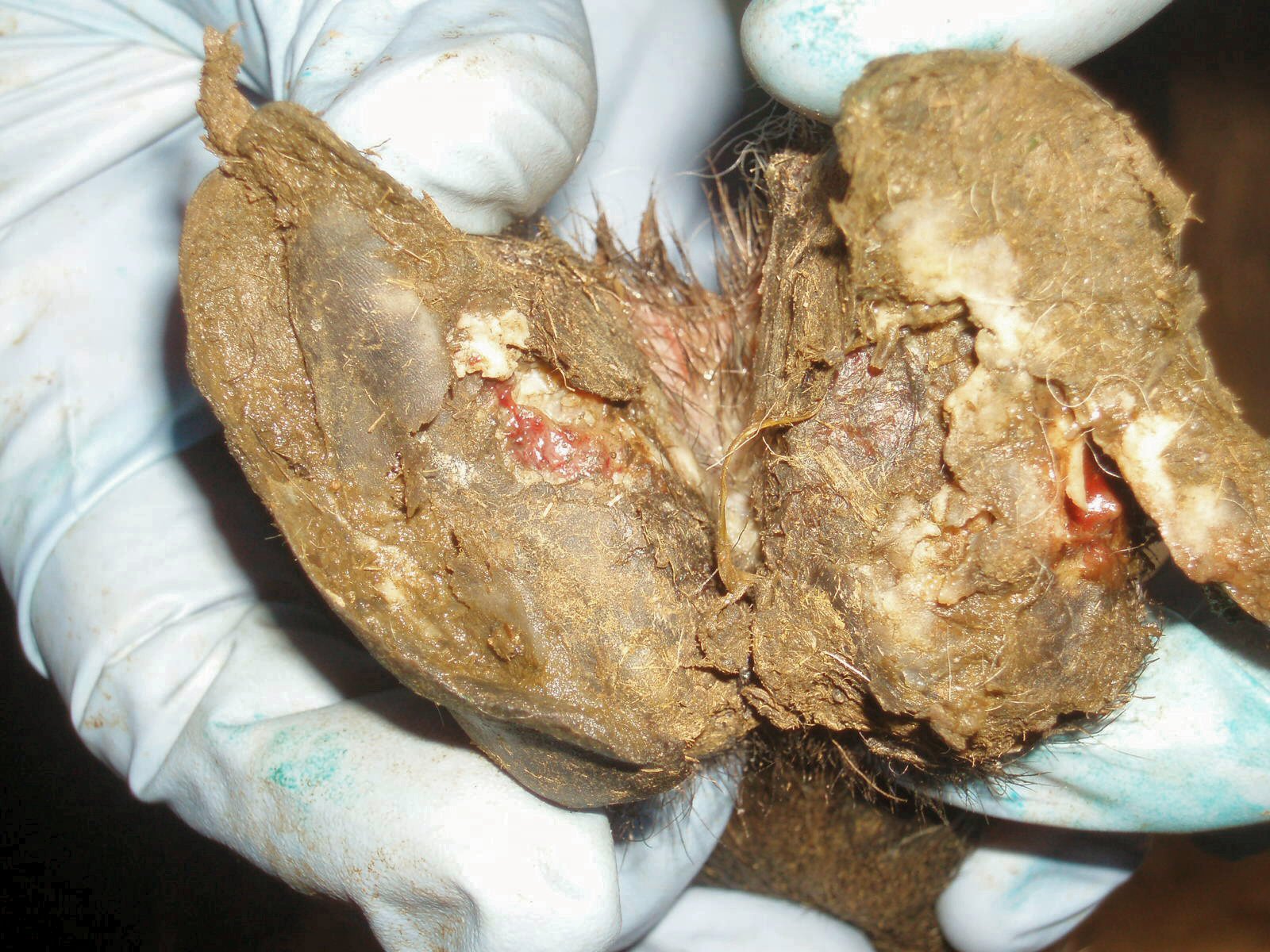- Home
- Knowledge library
- Diseases that cause lameness in sheep: footrot
Diseases that cause lameness in sheep: footrot
From spotting the first signs to treating the disease, our advice will help you to manage all aspects of footrot.
Signs of footrot
- A grey, oozing pus with a distinctive foul smell
- A separation of hoof horn, starting in the interdigital space
- Once established, the sole horn and outer wall horn may be under-run

Cause
Footrot, like scald, is caused by the bacterium Dichelobacter nodosus, which lives on a sheep’s feet.
The bacteria are present on about 97% of farms.
Bacteria are found on pasture for most of the year, except in very dry conditions.
Infection is most likely to spread during warm, moist conditions in spring and autumn, although wet summers and mild winters may create a year-round problem.
- Sheep with scald are the most infectious, contaminating pasture with bacteria
- Footrot bacteria can survive on pasture for approximately 14 days
- Infection is particularly likely to spread in wet, soiled areas, such as handling systems and gateways, and in housed sheep where bedding is warm and stocking rates are high
- It can spread from ewes to lambs during the summer months
Treatment
When disease is seen, treat immediately.
- Give a long-acting antibiotic injection for the correct weight of the animal; discuss with your vet
- Do not underdose
- Apply antibiotic spray
- Do not foot trim or foot bathe – these are not effective treatments
- Consider providing pain relief to help recovery; discuss with your vet
Separate sheep wherever possible. Separation is very effective because it prevents sheep from continuing to spread bacteria onto the pasture, even after treatment.
Prevention
Good flock management will reduce the risk of further epidemics.
Do not select replacements from sheep with a history of lameness.
Implement the five-point management plan.
- Cull sheep that have had footrot more than twice
- Consider vaccination if lameness levels are high, as well as before high-risk periods, e.g. housing
- Treat even mildly lame sheep as soon as possible (including ewes in late pregnancy)
- Avoid spreading infection – reduce the disease challenge by treating promptly and/or separating diseased animals
- Quarantine incoming sheep for at least 28 days. Physically inspect feet and foot-bathe on arrival. Check feet again before mixing with flock
In this video, vet Rachel Clifton from the University of Warwick explains why producers should control lameness in sheep.
Useful links
Lameness in sheep: the five-point plan

